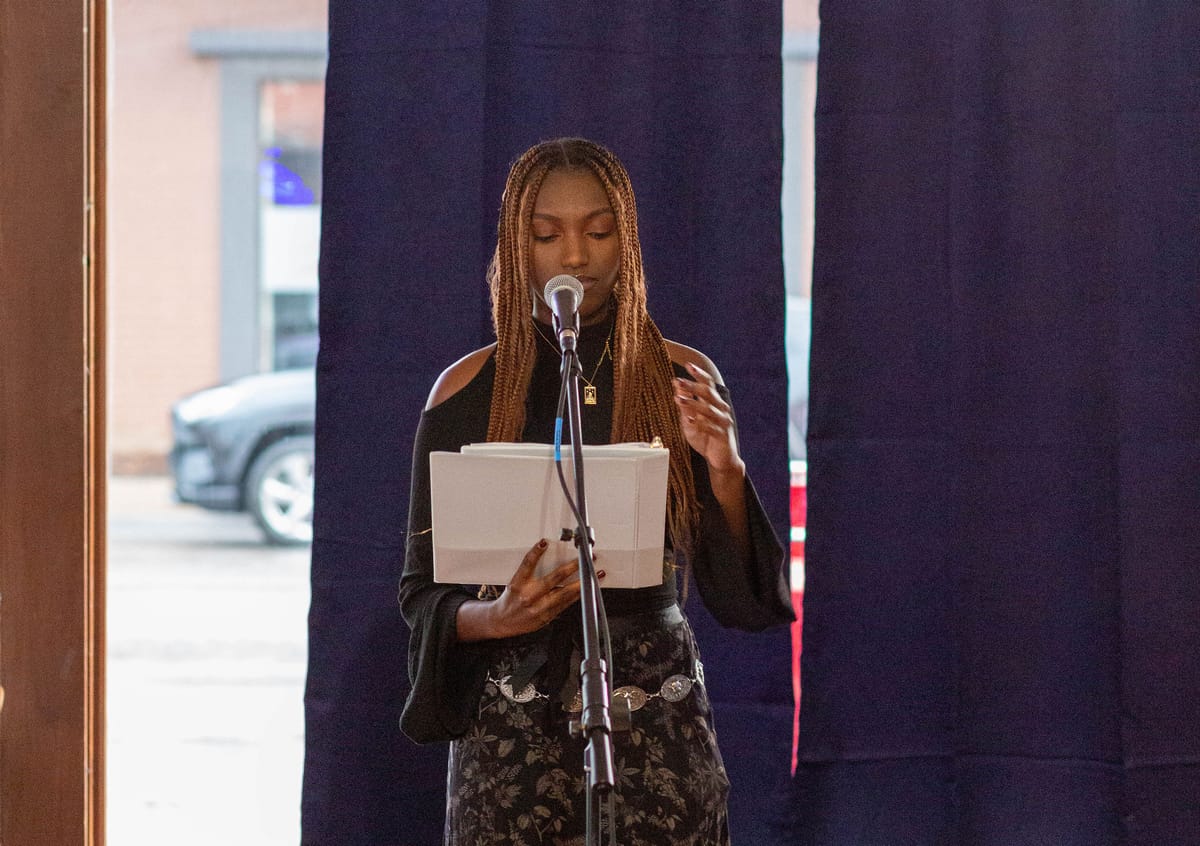'You don't have to give up': Clark Britton on making art into his 90s
In an interview with his friend and fellow artist Wade Hampton, the 93-year-old discusses his interests, inspirations and the reason for his longevity.
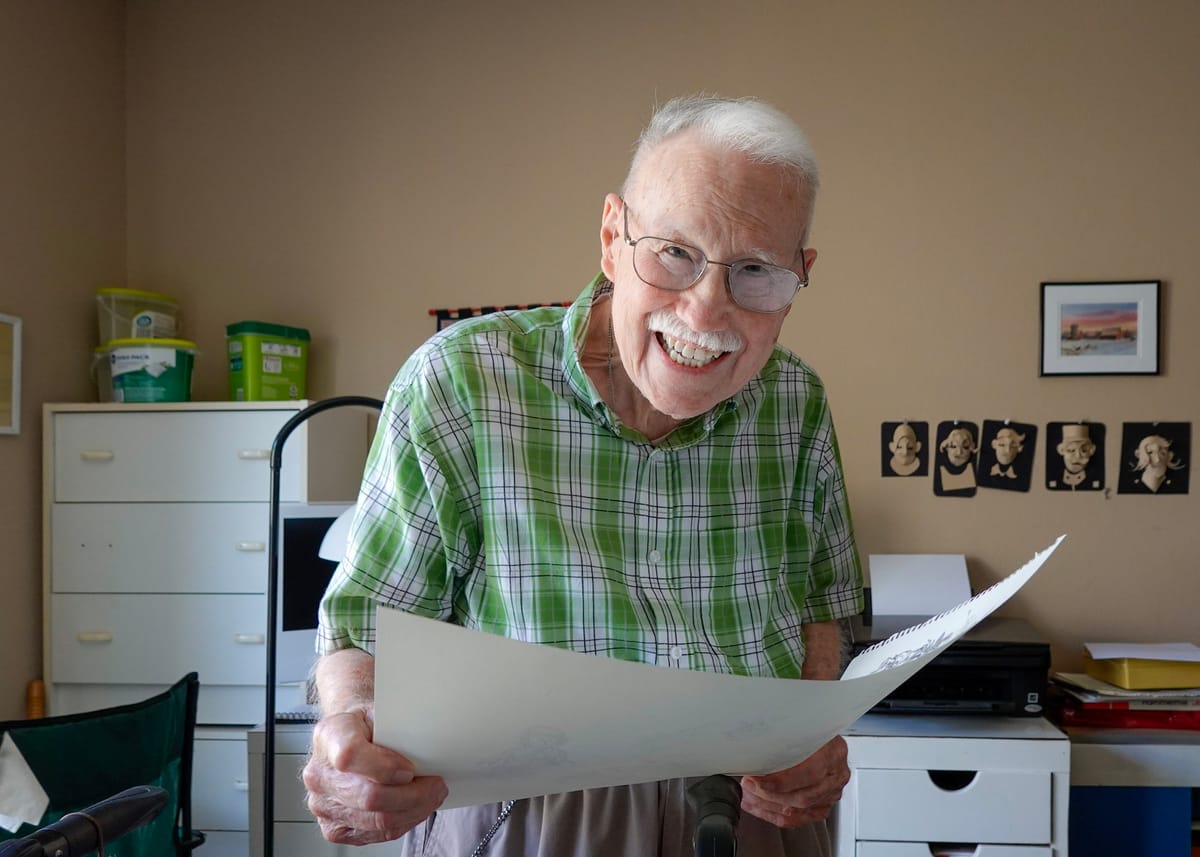
Clark Britton regularly shares photographs of his work on Facebook: drawings, handmade books, dolls, paper sculptures, calligraphy.
Two pieces are particularly impressive, not for their form but because of their context. Britton made small boxes from folded pieces of printer paper after suffering strokes in 2020 and 2021. While waiting in the hospital, his instinct was to see if he could make something to “keep from going nuts.”
The artist credits artmaking for his longevity — he’ll celebrate his 94th birthday next month. His 2000 retirement from Wichita State, where he began teaching graphic design in the 1950s, certainly didn't slow Britton’s pace. He shares a piece of work or aspect of his process nearly every day on social media, in part to encourage others to follow his lead.
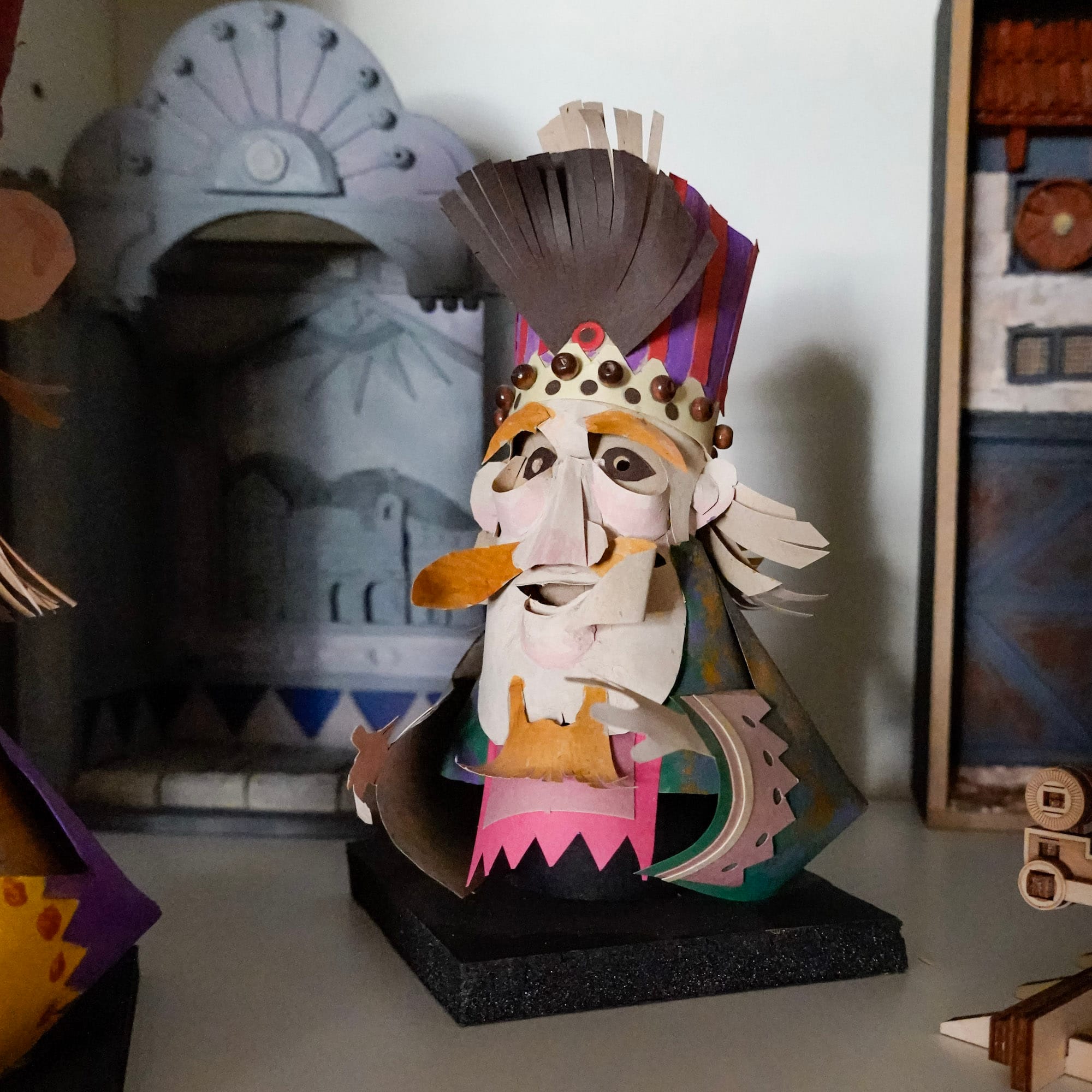
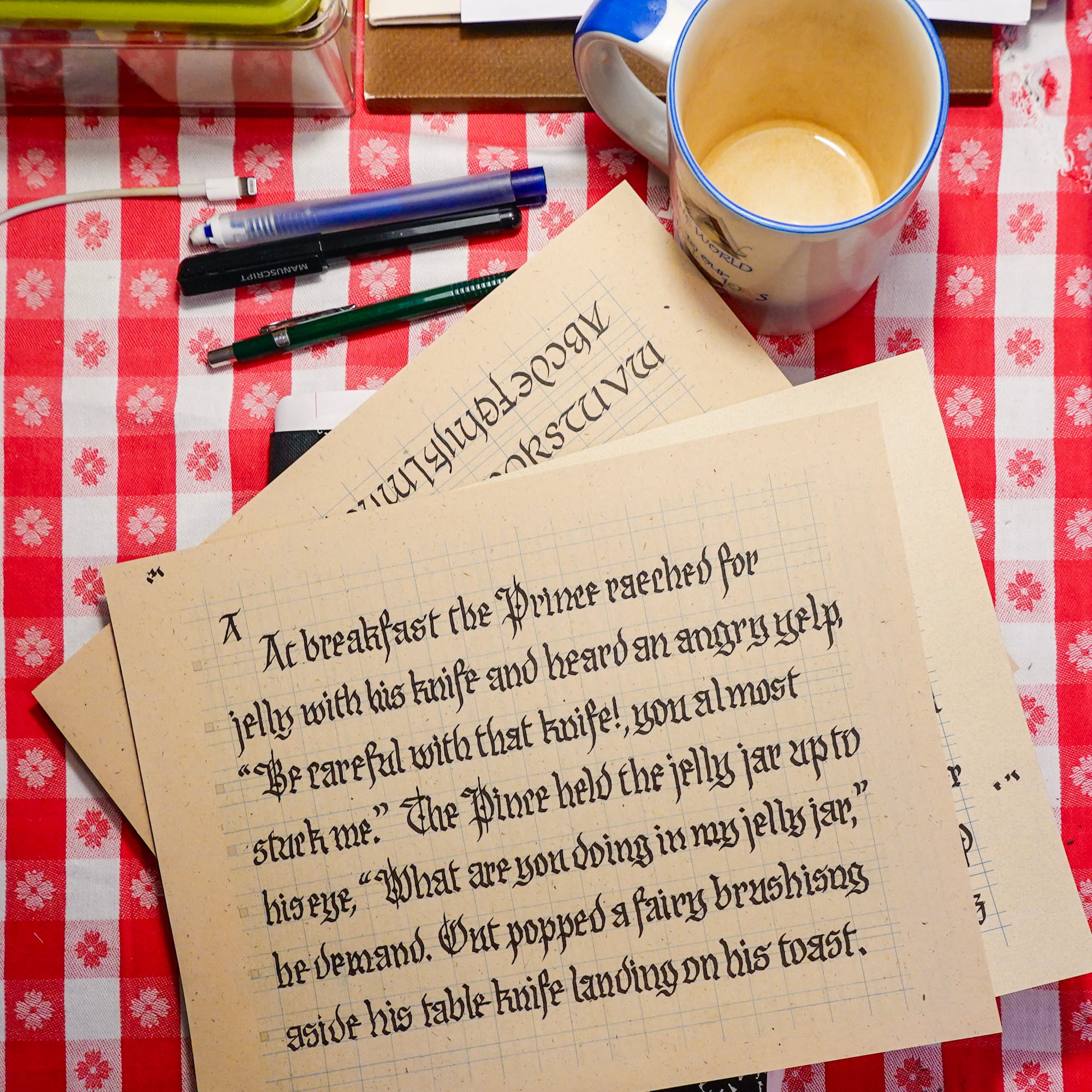
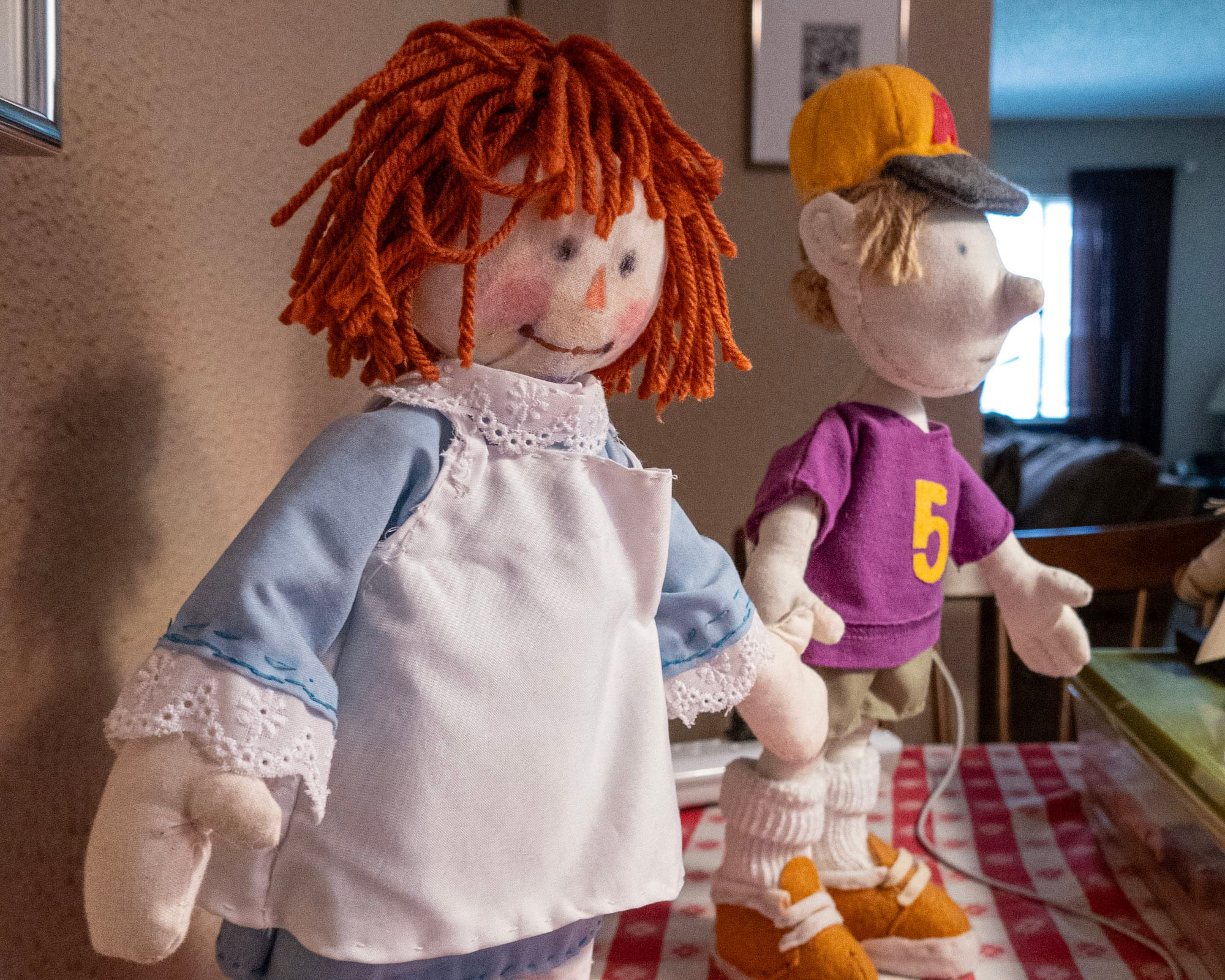
A few of Clark Britton's pursuits, from left: sculpture, calligraphy, and doll-making. Photos by Kendra Cremin for the SHOUT
Britton’s incessant making, and his wide-ranging creative interests, bear a resemblance to Lindsborg, Kansas, artist Lester Raymer (1907-1991). In 2016, the Wichita Art Museum paired their work together in an exhibition. One of Britton’s small paper sculptures is on view in an exhibition of circus and carnival-themed work at the museum, installed catty-corner to a recently acquired Kehinde Wiley painting.
Britton’s friend and fellow artist Wade Hampton conducted the following interview, which has been edited for length and clarity. The pair met in a WSU classroom in the 1980s and still get together to talk about and share their work with each other. —Emily Christensen
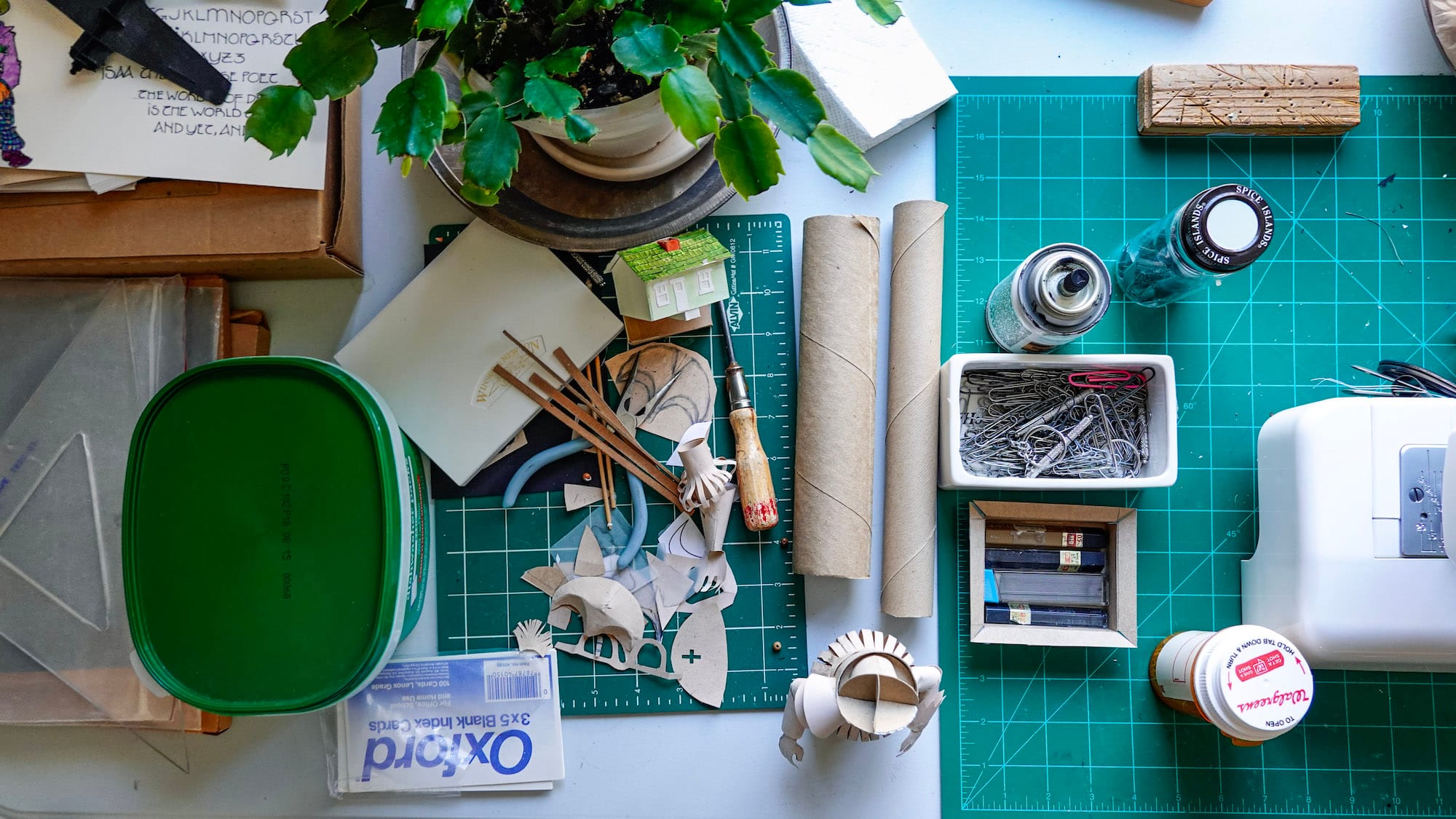
Wade Hampton: You’ve always been interested in 1,000 different things. Why is that?
Clark Britton: I get bored. Once I learn how to do something and produce it, then I get bored with it. I just don't want to do the same thing over and over and over again.
I taught watercolor, I did watercolor painting, I changed my style. I got a painting in the collection of the Smithsonian American Art Museum. Then I got interested in film. I made films till 1980, and I got into an international film festival with my animated films, and I produced films, and I just went from one thing to another, whatever was interesting to me.
I had planned to make animated films after I retired, but then the computer came along, and the whole business went bah-hooey. I had been doing paper cuts during my schooling, and then I got interested in that. I like bookmaking, but I don't like printing on the hard press. That was too much. I had one. I used it, but I gravitated towards desktop printing. I've got over 100 books that I've done since 2018.
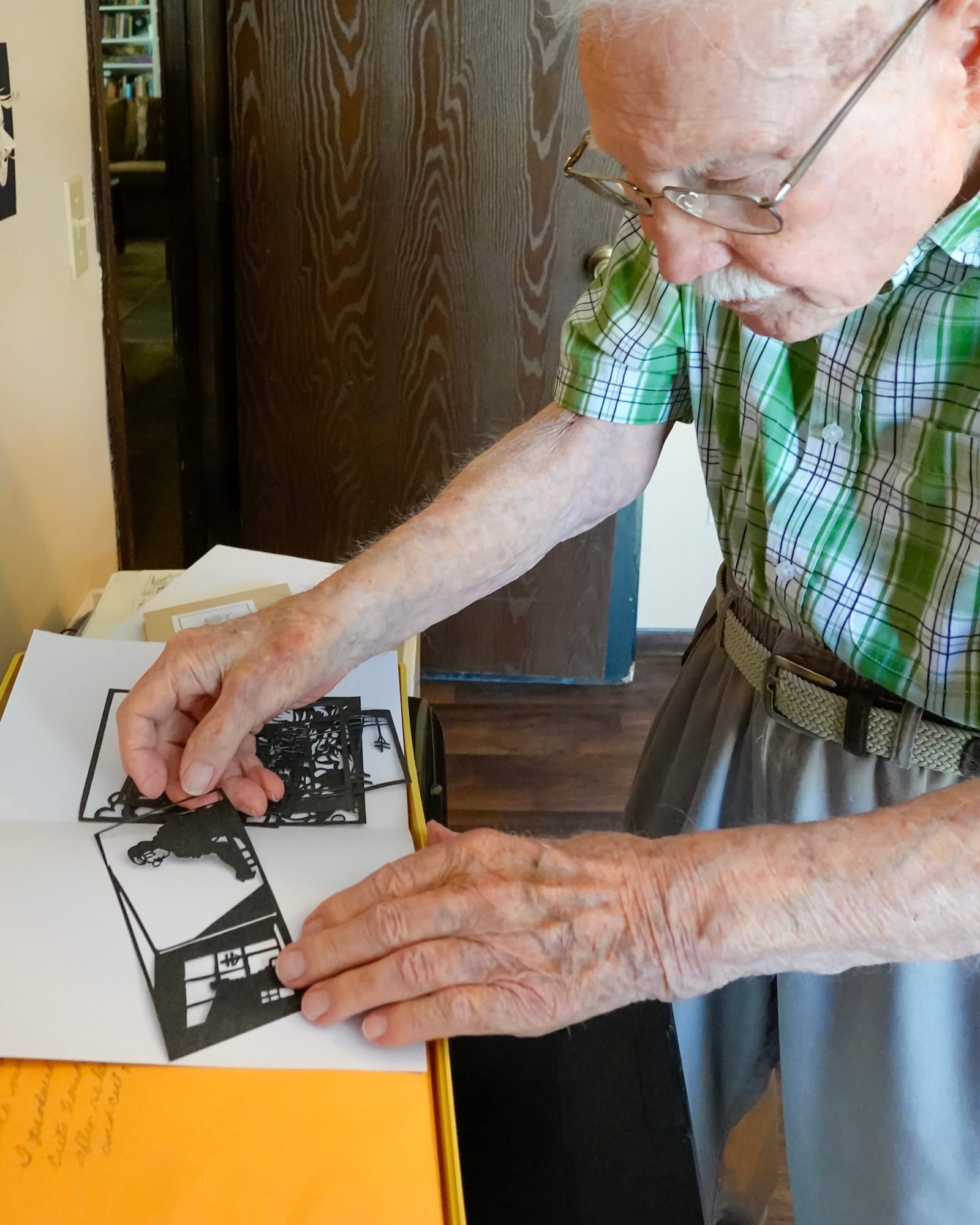
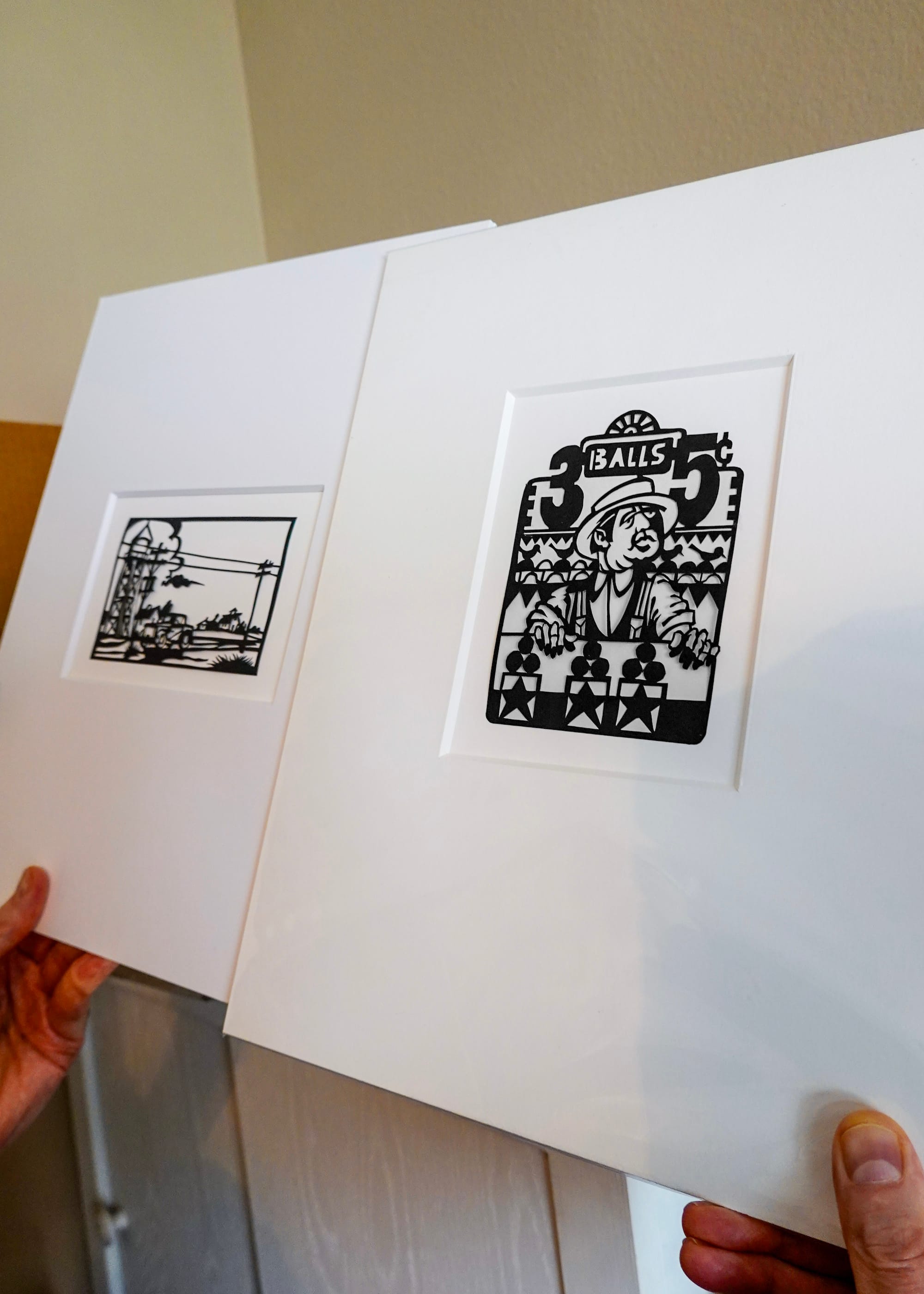
Clark Britton learned the art of making intricate paper cuts as a student and returned to the practice in retirement. Photos by Kendra Cremin for the SHOUT
WH: I’ve told people about those. They’re amazing.
CB: I got interested in making dolls, and I made dolls, and then my hands went bad.
WH: You did pretty well with Raggedy Ann recently.
CB: I did make Raggedy Ann, but it was really hard. She’s OK. But I finally decided that I draw. I've always liked to draw.
Our free email newsletter is like having a friend who always knows what's happening
Get the scoop on Wichita’s arts & culture scene: events, news, artist opportunities, and more. Free, weekly & worth your while.
No spam. Unsubscribe anytime.
WH: When do you feel like you’re at your best artistically?
CB: I don't know, I just do what I do. I probably draw better today. You could see what I was drawing there, just open up my pad. I do that all from memory. I don't use models, I don't use reference images. I just use my head.
WH: I know, it’s mind-blowing.
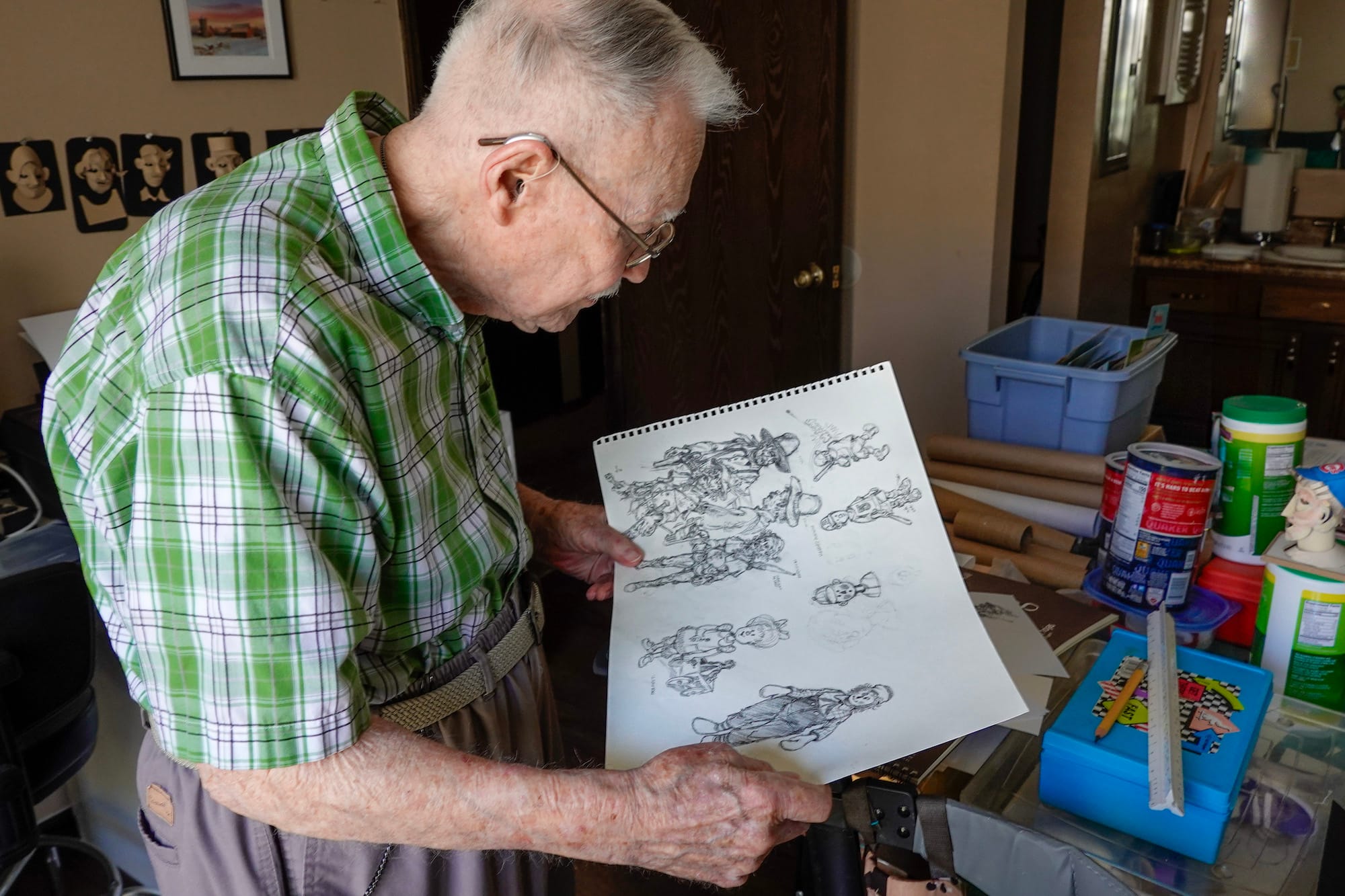
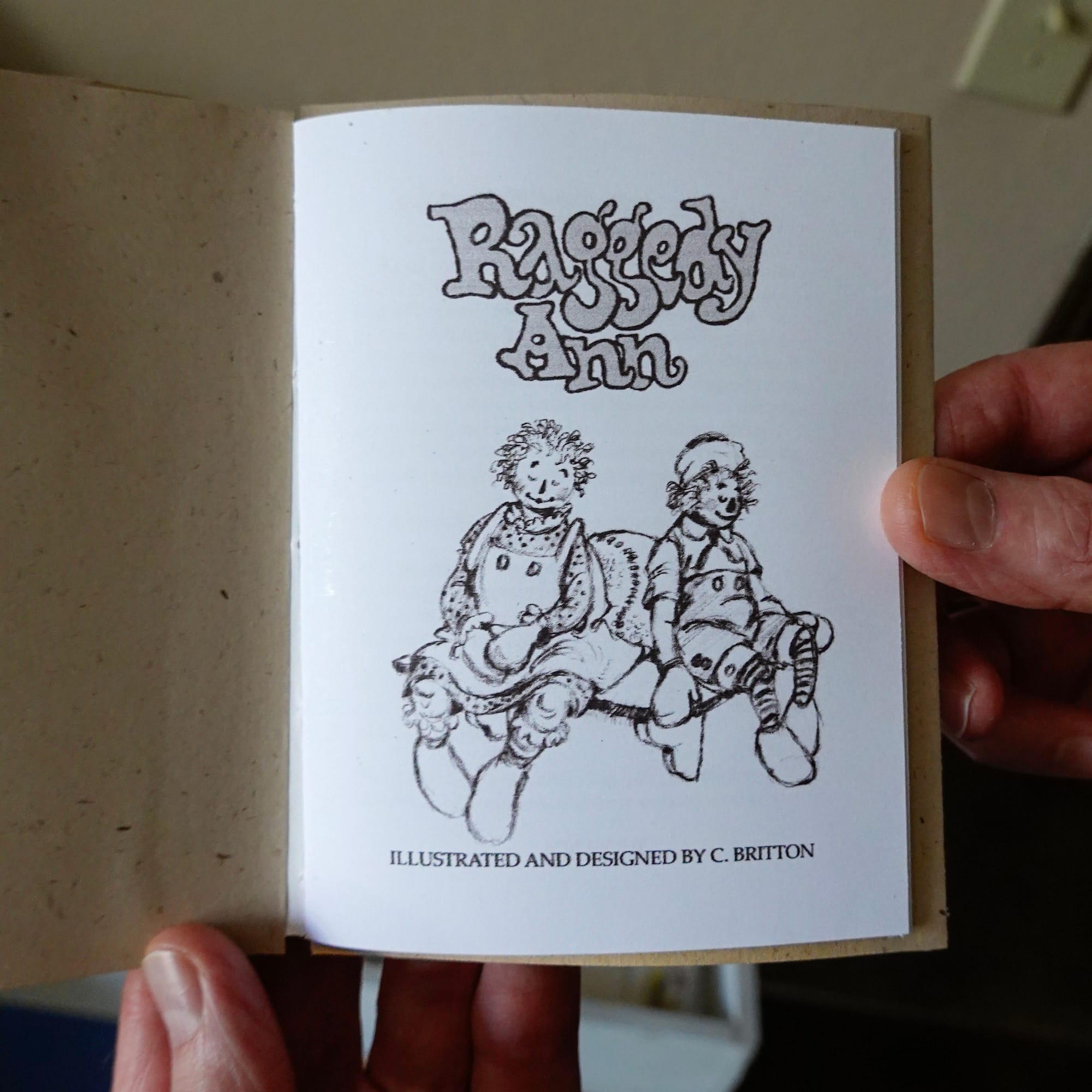
Left: Clark Britton looks at some recent sketches Right: Britton's skills as a designer, illustrator and craftsperson converge in one of his many handmade books. Photos by Kendra Cremin for the SHOUT
CB: I think I'm a draftsman. Most people think of me as a draftsman. They don't think of me as an artist.
I like calligraphy, and I haven't done any calligraphy in the last six months, but I produced a beautiful book out of calligraphy.
WH: What artists and designers have inspired you?
CB: I like Walt Kelly, the creator of Pogo. Of course, I had all of Flash Gordon. I like the cartoonists of the 20s and 30s. And I like James Christensen, who is now dead. I love Christensen's drawing and his imagination, but I could never do that. I have to do what I do.
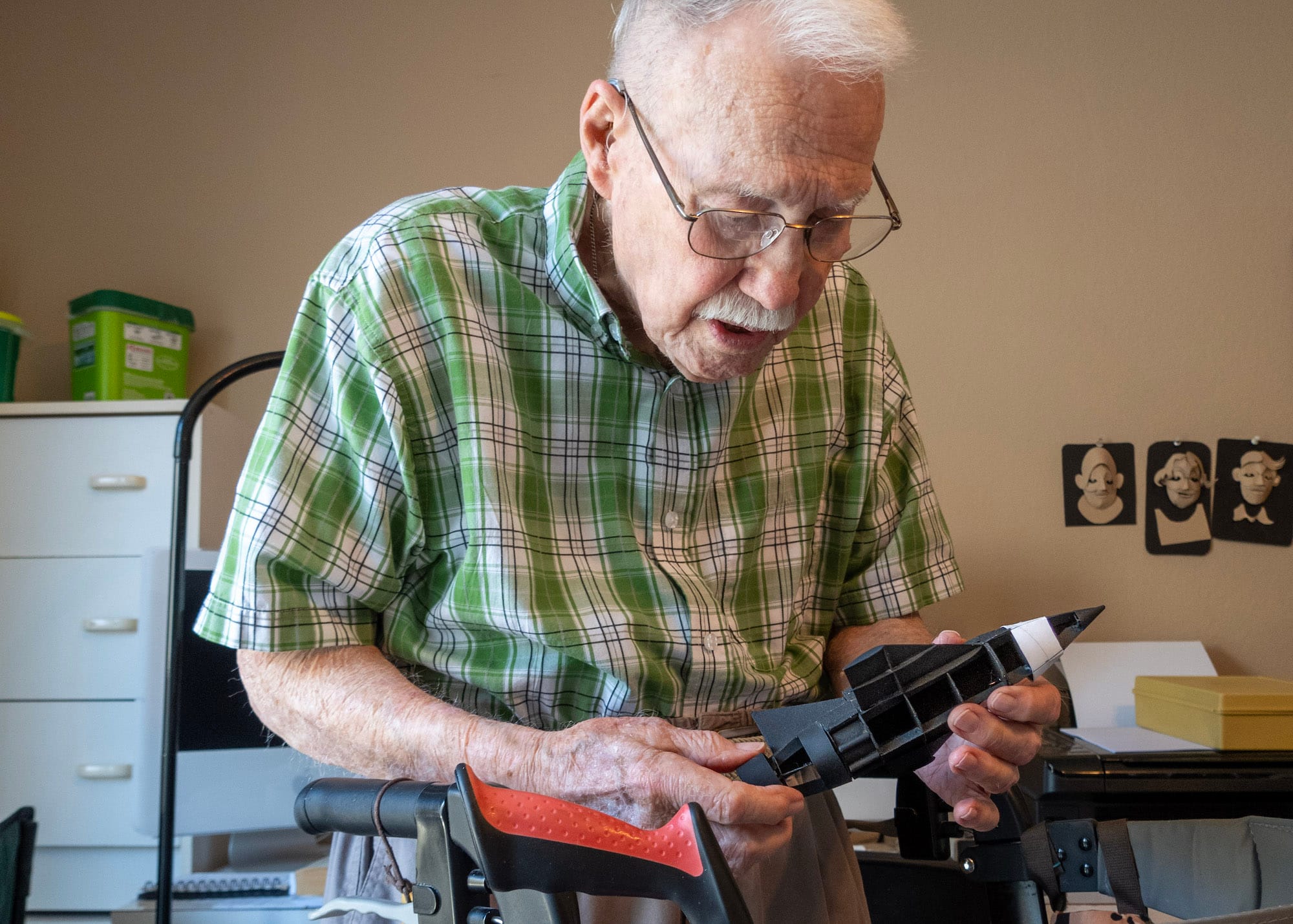
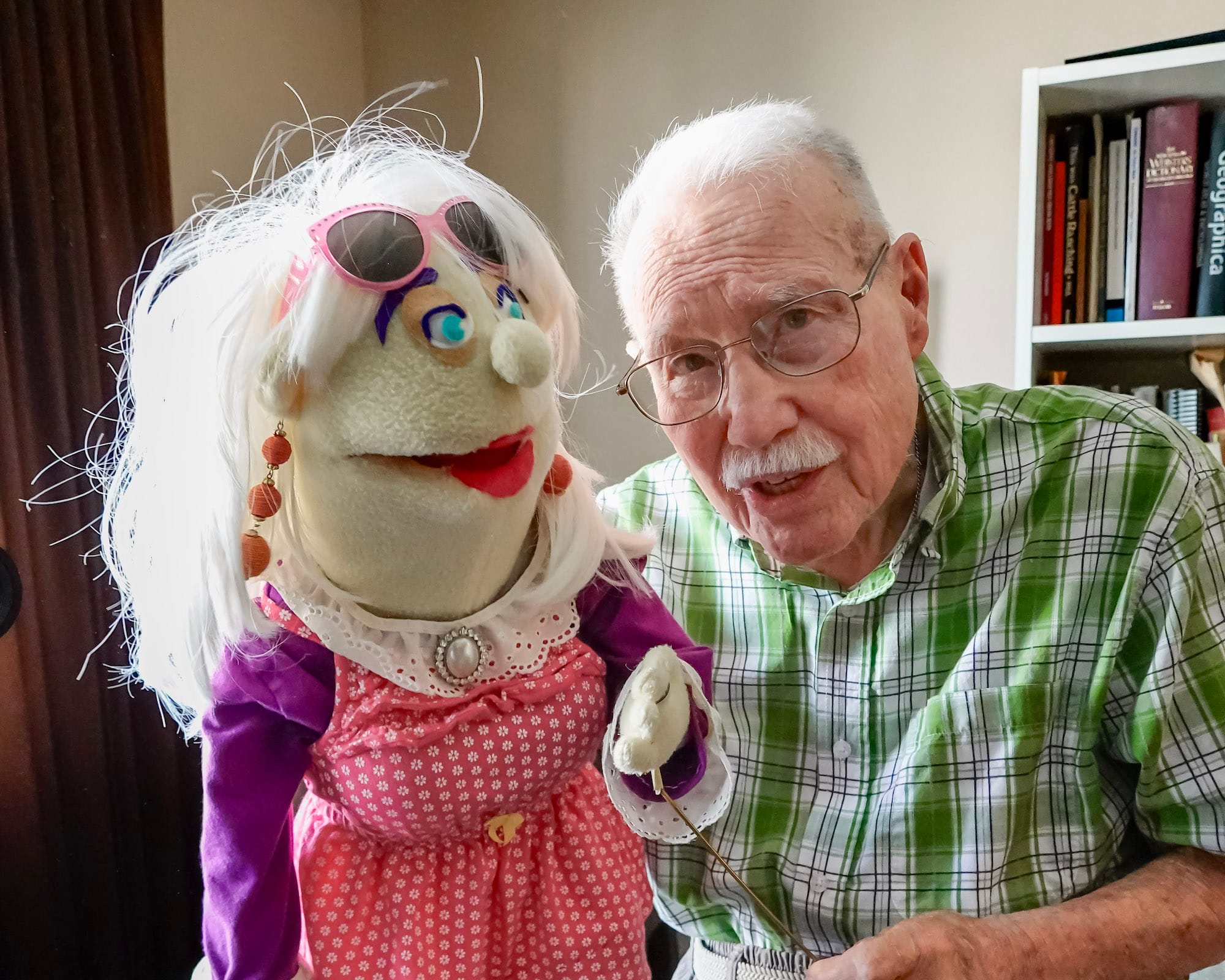
Doing "what (Britton) has to do" includes the the construction of paper and soft sculpture. Photos by Kendra Cremin for the SHOUT
WH: What's one of your favorite things you've done over your career you're most proud of?
CB: Well, I thought that (the graphic novel) “The Killers” was outstanding, but I don’t know how many people have seen it.
WH: How do you feel after the stroke? You made Raggedy Ann — do you feel like you're better?
CB: No, I still have to use a walker all the time because I have an imbalance all the time. And I can’t hear worth a shit anymore. I have a hearing aid and I tried to get another one, but it caused so many problems and made me more dizzy. And if you tried to stay all afternoon, I couldn’t take it because I’ve got too much stuff coming in, and I can’t process it all.
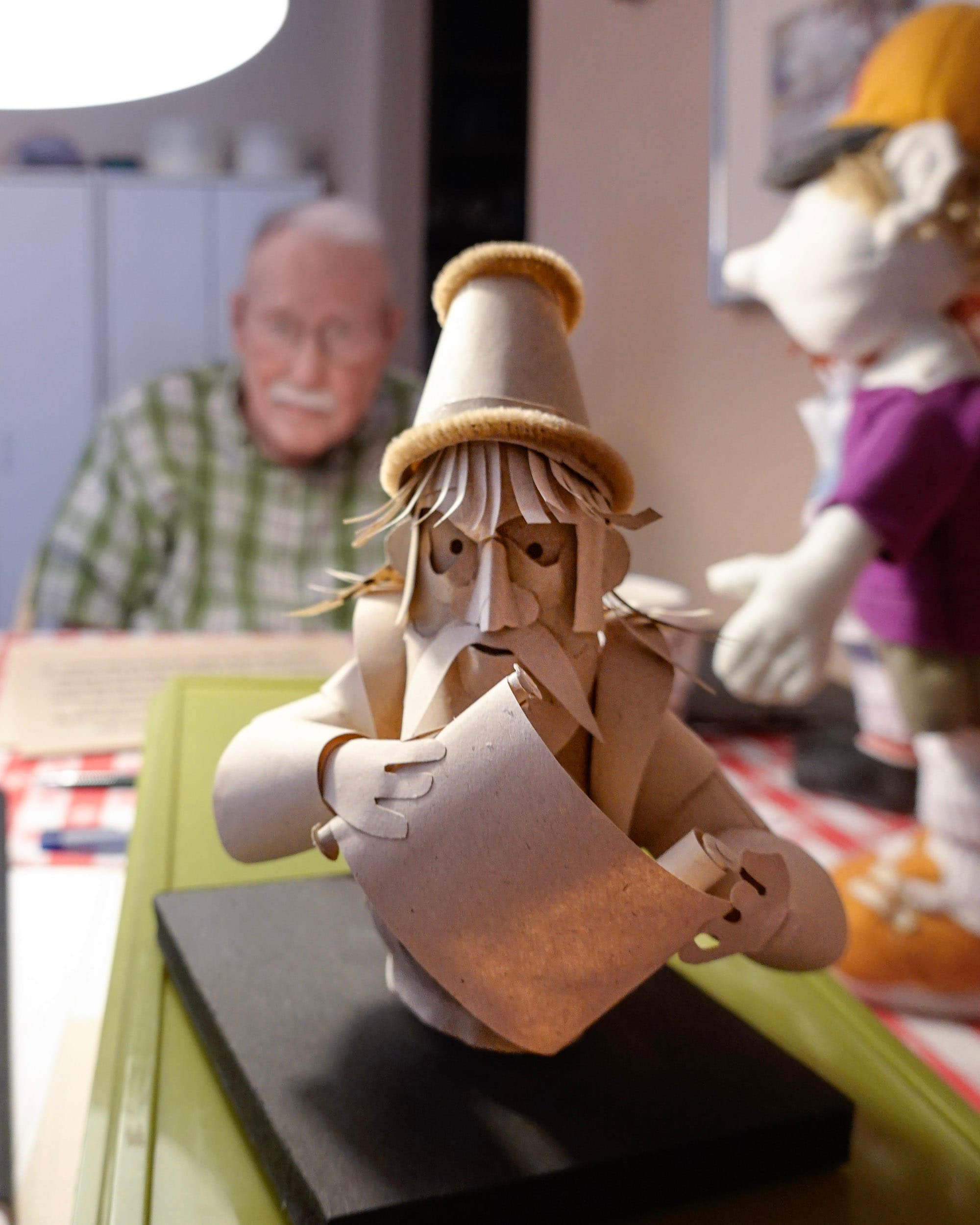
WH: Well, I won’t ask too many more questions. What makes you make art every day?
CB: I do the dishes, I make the bed, I do the laundry, I go to the store, I go get my (prescription) drugs, I go to the doctors, and I draw pictures, or I make art, because that's what I like to do.
WH: You told me once that you wouldn’t be alive today if it weren’t for art.
CB: I don’t think I would be. I’d have been dead.
I don’t show my work to glorify Clark. It embarrasses me, frankly, when people look at something, and they’ll say it’s amazing. I don’t think it’s amazing, it’s just something I’m doing right now.
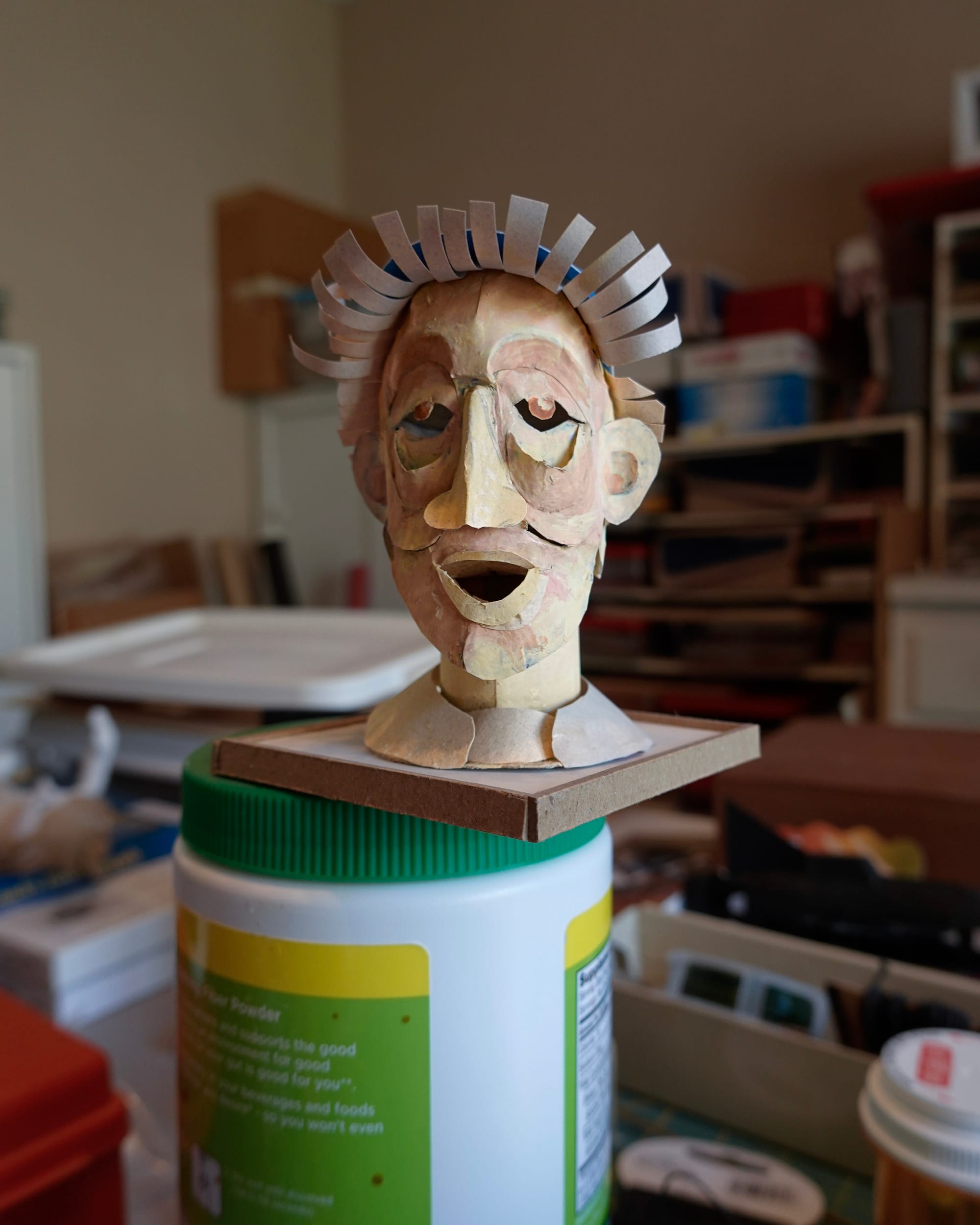
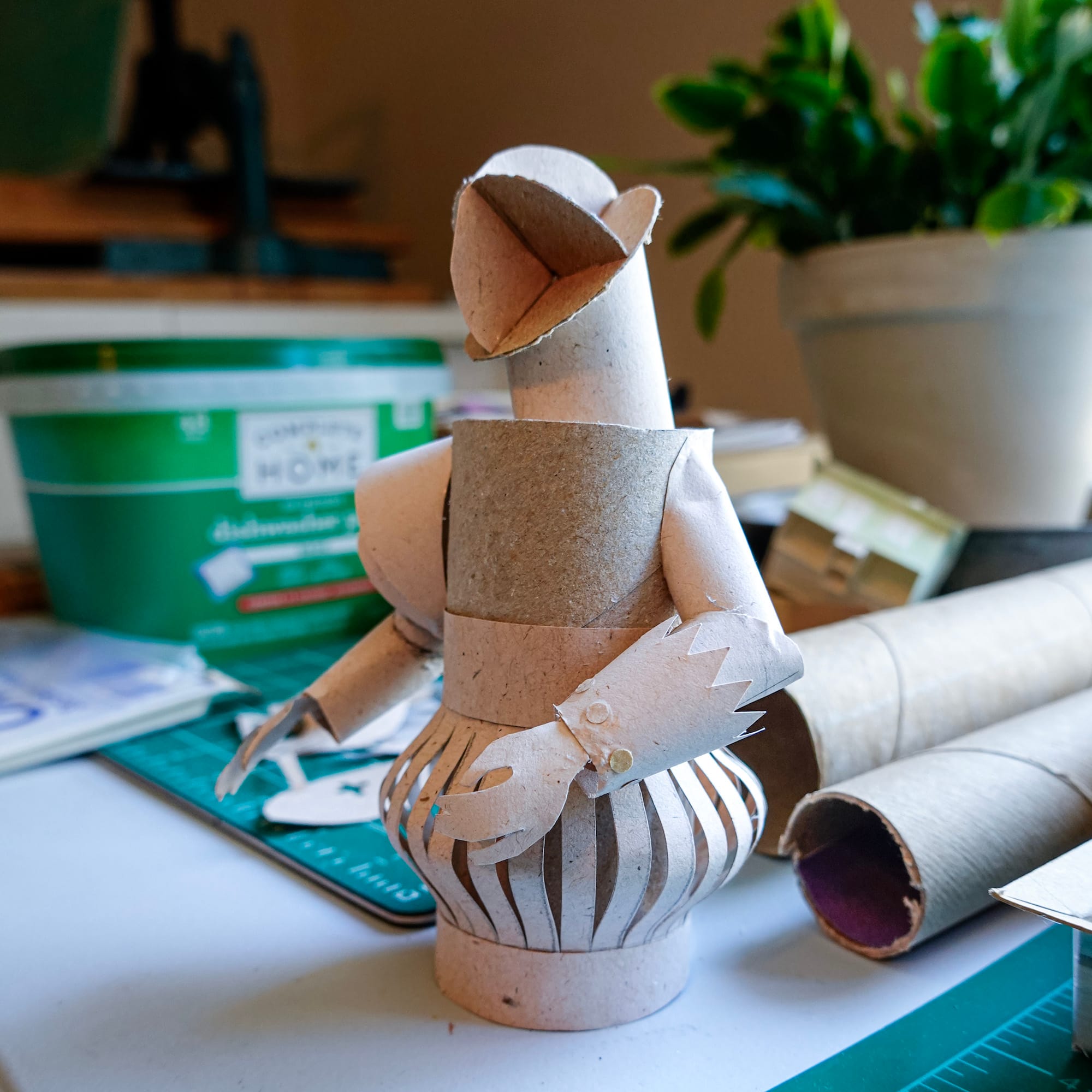
Works in progress. Photos by Kendra Cremin for the SHOUT
WH: You once told me that you like people to see that you can keep doing it.
CB: I wanted them to see that you can do something after you’ve had a stroke. You don’t have to give up.
WH: What’s your advice for people who want to make art?
CB: Don't tell me that you can't learn to draw. Because anybody can learn to draw, and I can teach anybody to draw. It's just that it's a process that you have to start, and you then you keep doing, and then you get better.
WH: And you have to want to do it.
CB: And you have to want to do it. The two drawings that I made were before I even ate breakfast this morning, because I'd rather do that than eat breakfast.
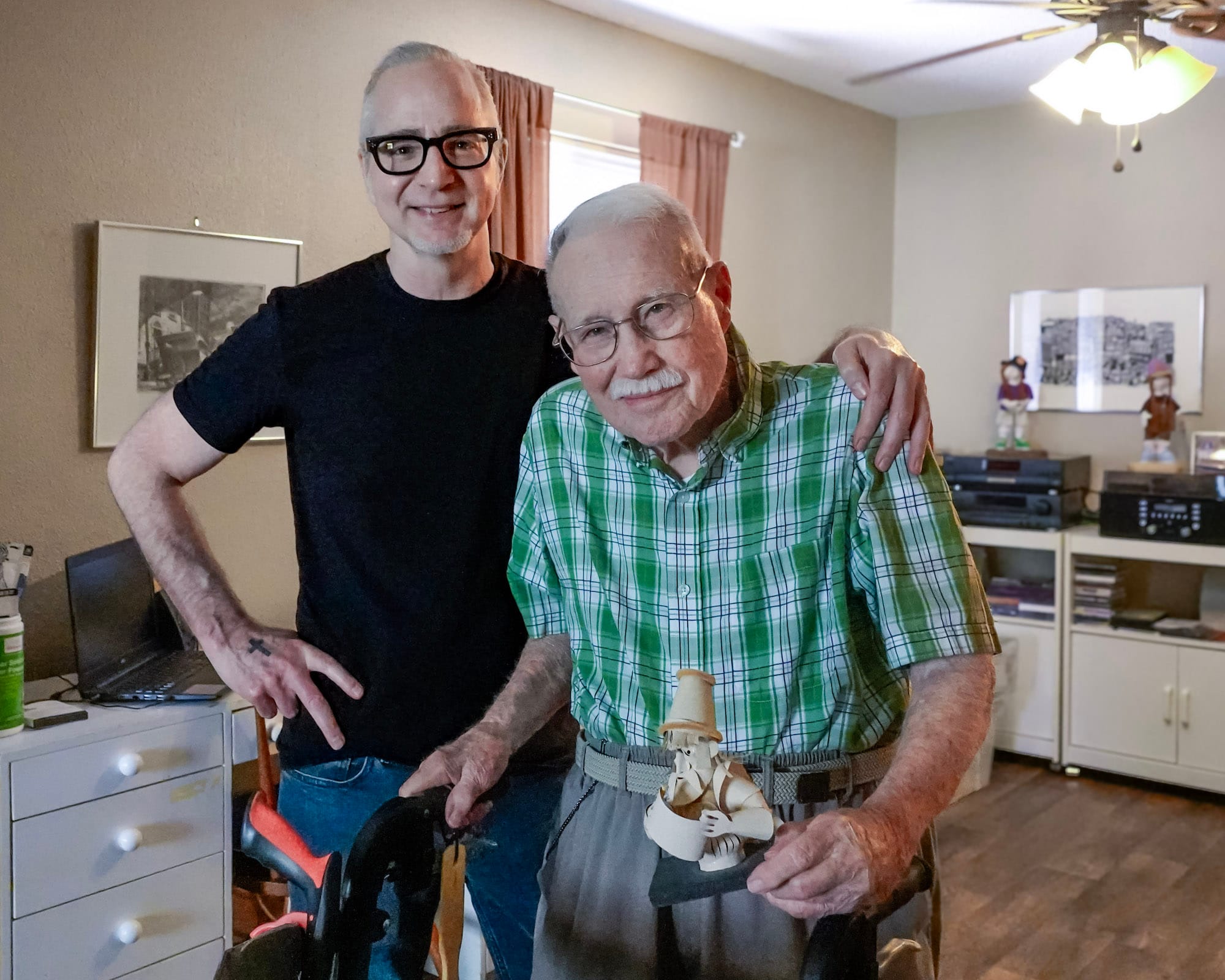
Born in 1930, Clark Britton earned a master’s degree in graphic design from Alabama Polytechnic Institute (Now Auburn University), where he taught before accepting a position at Wichita State. His work is in the collections of the Wichita Art Museum, Wichita State Special Collections, and the Smithsonian American Art Museum. You can find more images of his work on his blog and on Facebook.
Wade Hampton manages the art department during the day at Spectrum Promotional. During his free time, he is a painter, illustrator and filmmaker.
Kendra Cremin is a photographer, artist and part-time Instructor at Wichita State University. Her areas of focus are lifestyle, commercial, fine art, documentary photography and where to get her next cup of coffee.
Emily Christensen is a freelance journalist and news entrepreneur based in Wichita, Kansas. She is a co-founder of the SHOUT.
Support Kansas arts writing
The SHOUT is a Wichita-based independent newsroom focused on artists living and working in Kansas. We're partly supported by the generosity of our readers, and every dollar we receive goes directly into the pocket of a contributing writer, editor, or photographer. Click here to support our work with a tax-deductible donation.
❋ Derby man has the kind of voice that turns heads — and chairs
❋ Socializing while sober: how some Wichitans are cultivating alcohol-free communities
❋ As a small creative business closes, the owner mourns
❋ Painting through it: Autumn Noire on 20 years of making art
❋ How a guy from Wichita resurrected 'Dawn of the Dead'
❋ Bygone Friends University museum housed curious collections
More profiles of Kansas artists
 The SHOUTEmily Christensen
The SHOUTEmily Christensen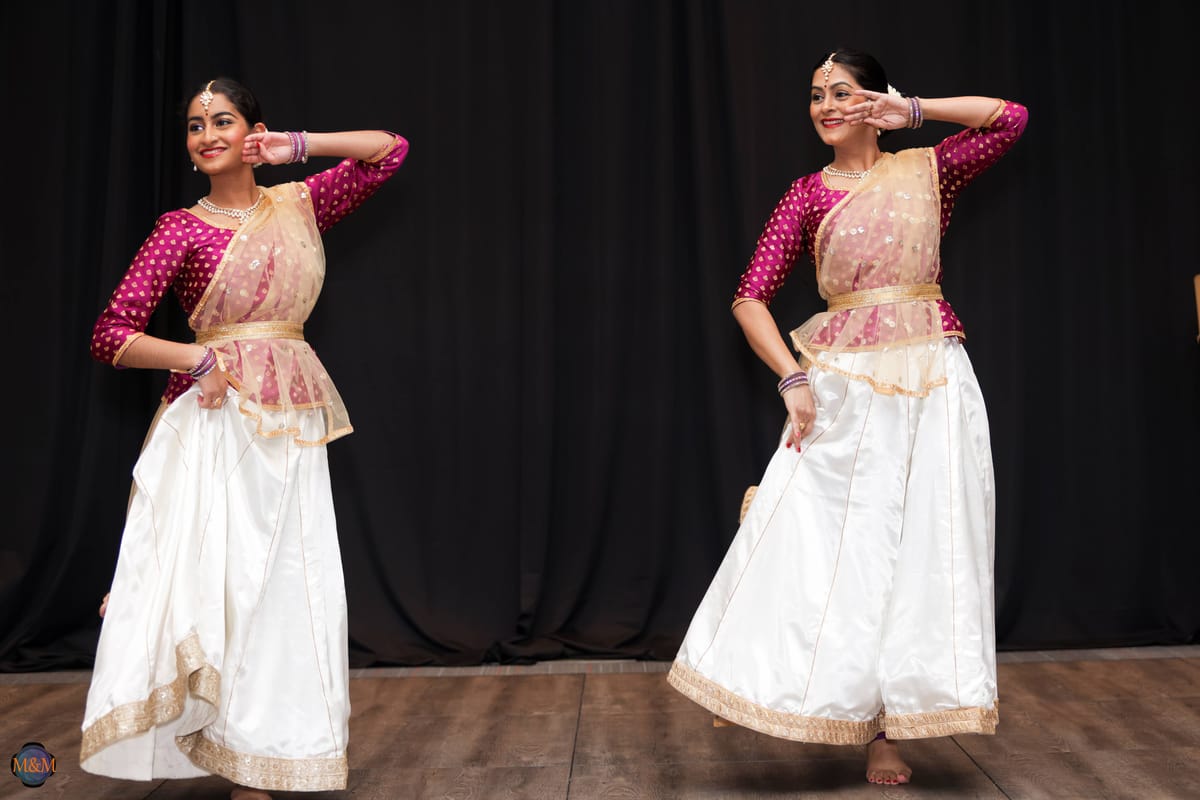
 The SHOUTJacinda Hall
The SHOUTJacinda Hall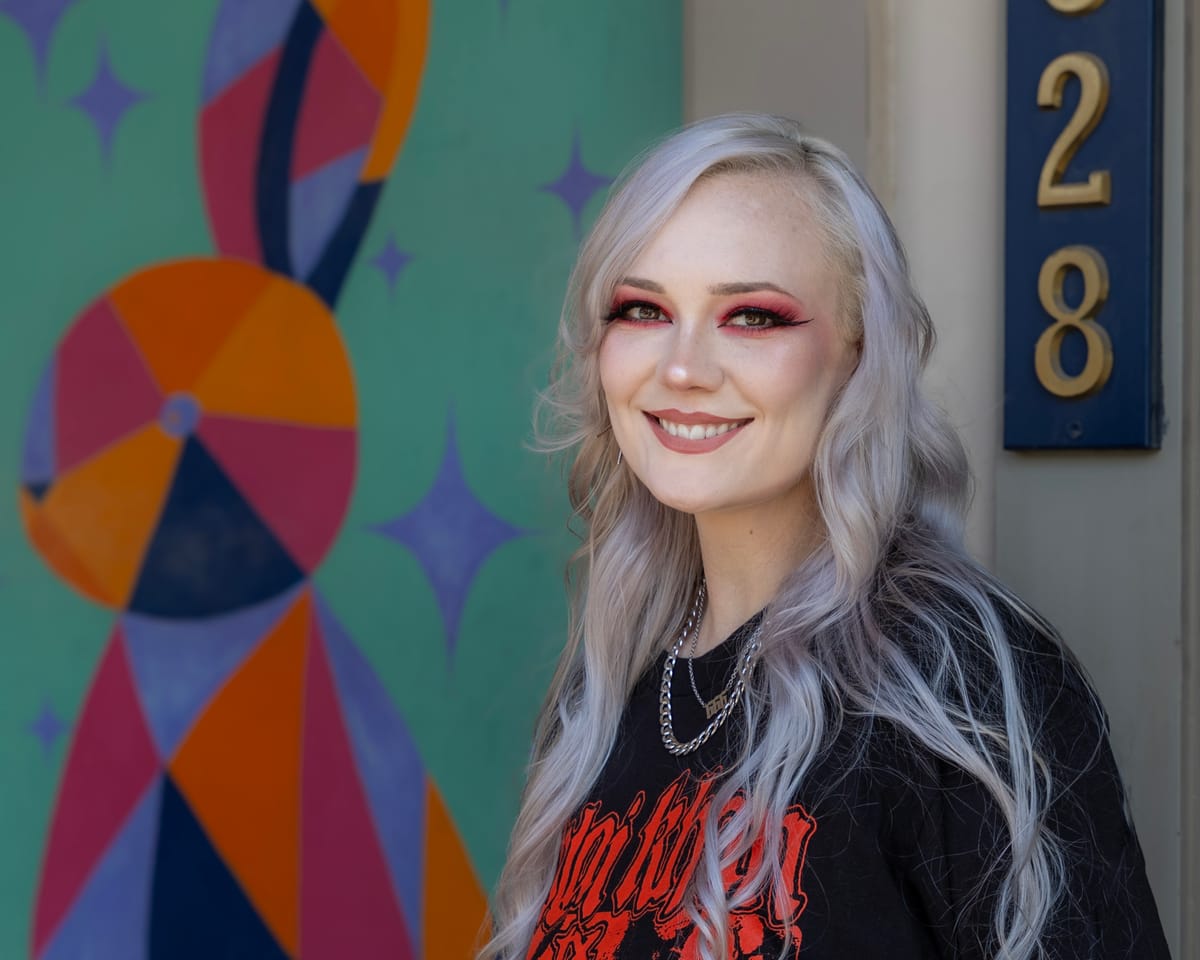
 The SHOUTEmily Christensen
The SHOUTEmily Christensen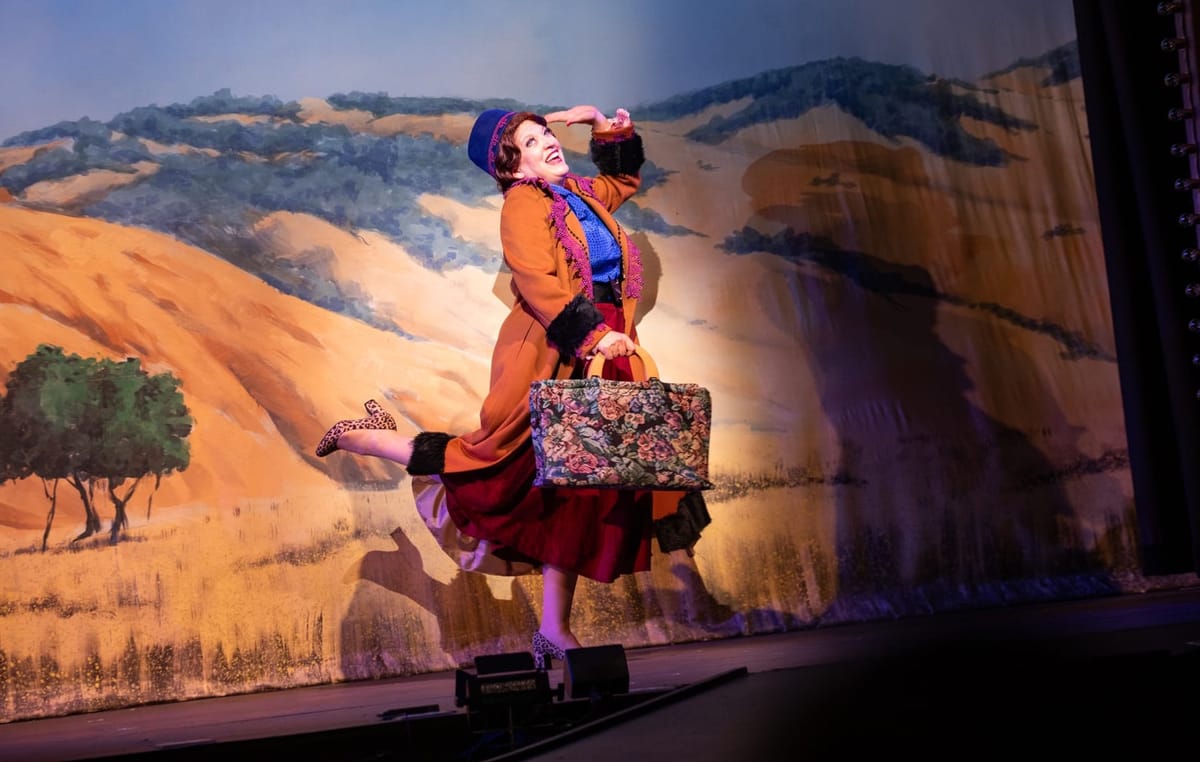
 The SHOUTJeromiah Taylor
The SHOUTJeromiah Taylor